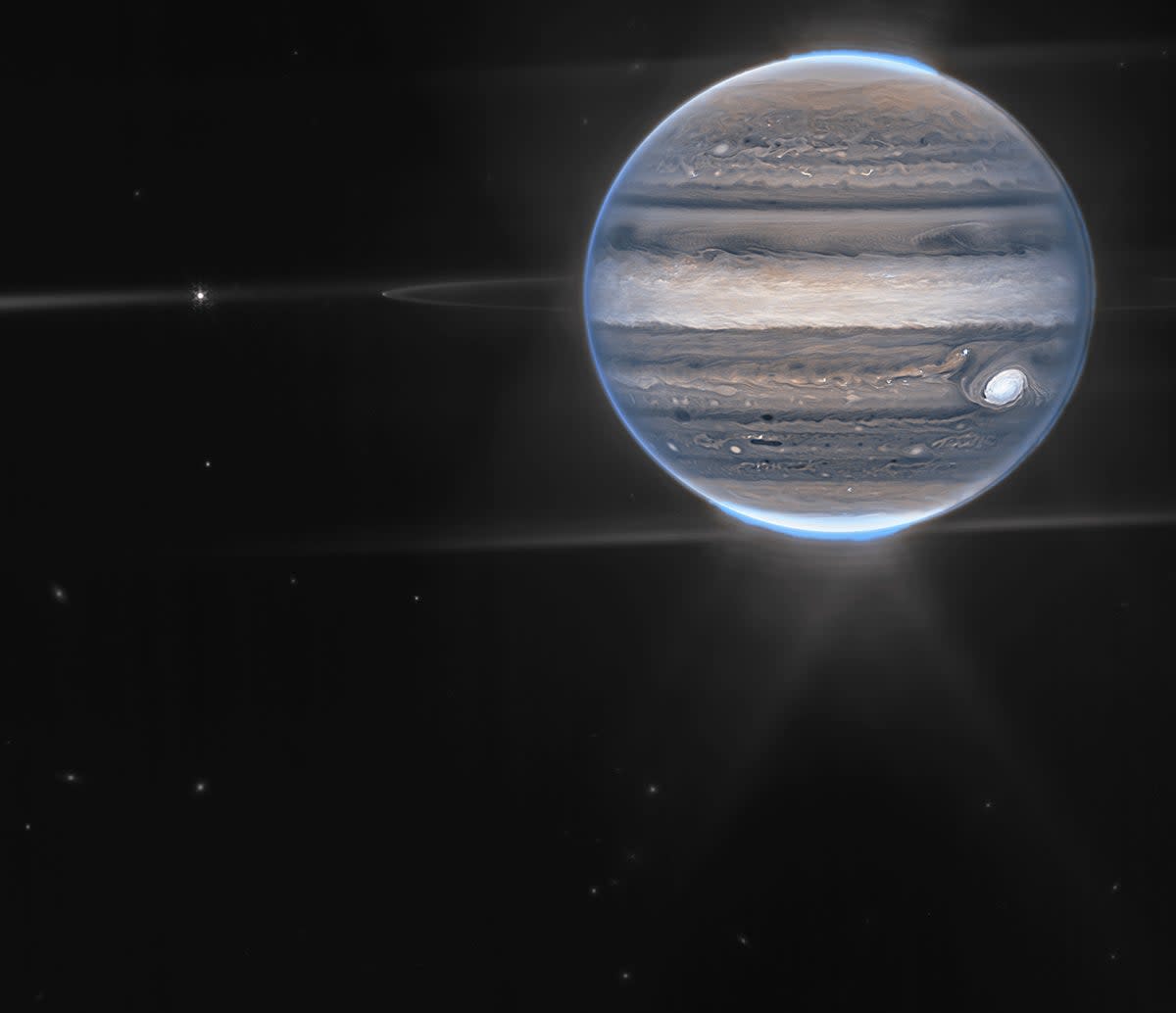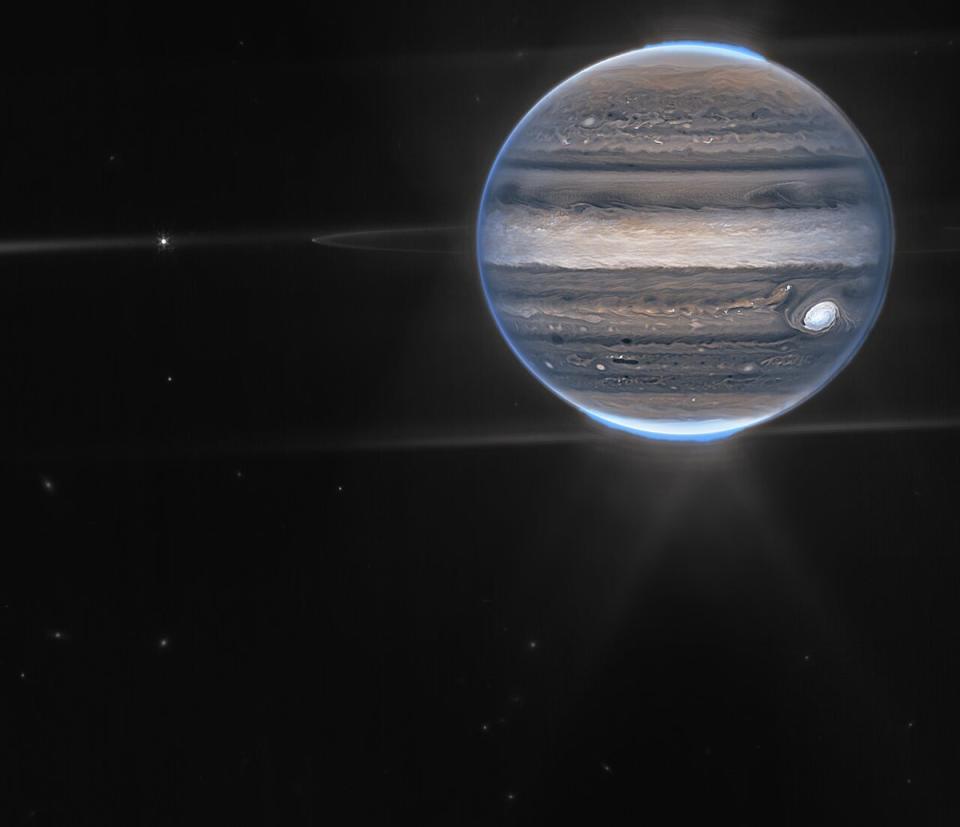Amalthea and Adrastea: What are the unusual objects ‘photobombing’ Jupiter in new Nasa JWST image?

When Nasa revealed a stunning new image from the James Webb Space Telescope, it was Jupiter that stood out. Shining brightly, we could see the auroras and swirls of the planet like never before, in another demonstration of the wonder of that new telescope.
But scientists pointed out that Jupiter wasn’t the only body in that image. Hiding out in the side, “photobombing” the planet, were two other objects.
They were Amalthea and Adrastea, two of the planet’s moons. While they aren’t exactly clear in the image – it would be impossible to know just by looking at it that they are moons and not stars or specks of dust on the picture – they are an intriguing part of an image that has already delighted many people.
And they are a reminder of just how different Jupiter, with its rings and vast array of satellites, is from us, despite being relatively nearby.

In fact, Amalthea and Adrastea are one of very many satellites in orbit around Jupiter. In total, scientists believe that the planet has 79 moons; 26 of them do not even have official names yet, and many were found only this century.
Amalthea and Adrastea were both found relatively long ago. Amalthea was found in 1892, by Edward Emerson Barnard; Adrastea was discovered in 1979, by the Voyager team.
Both of the planets are actually the moons of moons; they orbit around Io, a large and dense moon of Jupiter. The satellite is notable in a number of ways: it is the most geologically active object in our Solar System, and has less water than any other.
Io is one of four “Galilean satellites”, the first four moons that were discovered beyond Earth, which orbit around Jupiter. It is joined by Europa, Ganymede and Callisto.
Those four are the moons that remain most interesting to scientists. For instance Europa, which is covered in water and has an icy crust, has been suggested as the most likely place to find life elsewhere in our solar system; Callisto is the most heavily cratered object in our solar system.
Scientists have already explored those and other moons in depth, using devoted probes such as New Horizons and Juno. They have also been imaged in detail by telescopes on Earth, as well as the Hubble Space Telescope – and now the JWST.

